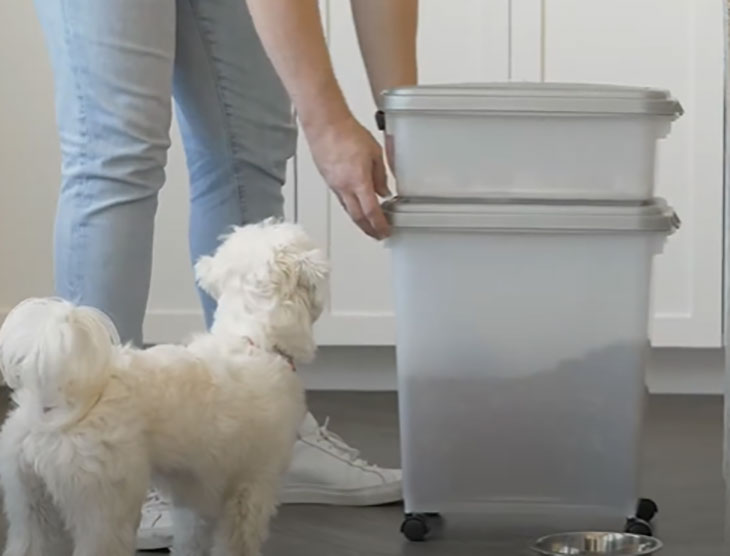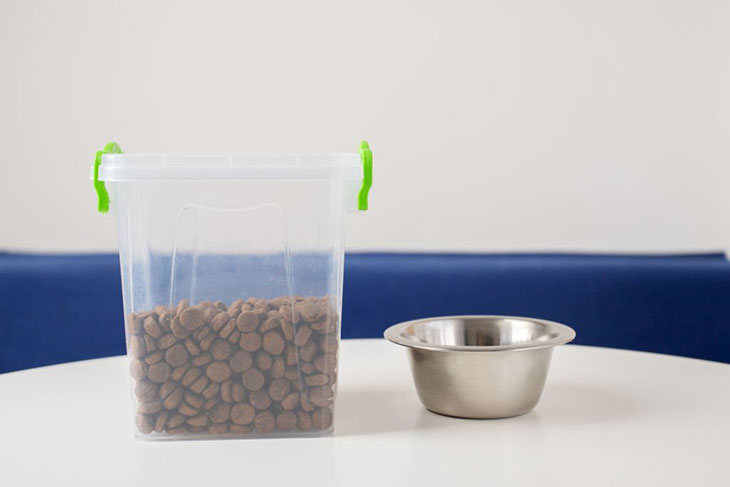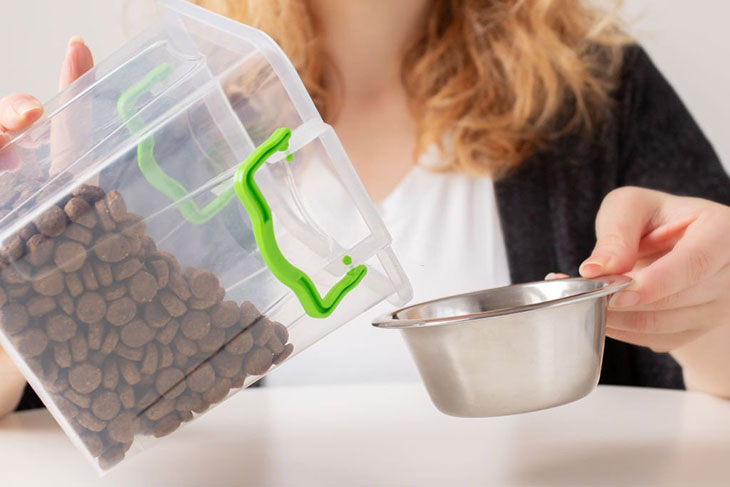The kibble’s weight is a factor that many people consider when feeding their canines, which could affect their eating habits.
But do you know about the converter of lbs to quarts dry dog food?
If you are unclear about these two measurement units and the process of converting one pound to a quart, this article will help you out.
Stay tuned and keep scrolling down for accurate conversions from pounds to quarts!
What Should You Know About The Converter Of Lbs To Quarts Dry Dog Food?

One pound of kibble (or dry dog food) is equal to 0.479 quarts, and 1 quart of dry dog food translates to approximately 1.3 lbs.
Yet, these conversion factors are not the same in every situation, depending on different brands’ products.
But don’t worry too much because the difference in measurement is minor, so you could rely on this converting formula to calculate specific feeding amounts of food and gain the exact ratio by yourself.
Otherwise, just turn to a conversion calculator.
One more interesting fact is that wet food and dry food are not the same in the measurement aspect.
The content of wet food seems heavier, so one pound of the kibble after being converted from quarts is greater than one pound of wet dog food.
How Many Cups Are There In A Pound Of Dog Food?
Generally speaking, one pound of kibble is equal to about 4 cups. However, the cup is of average size.
That’s why 4 cups in one pound are just a standard measurement formula because numerous factors affect the final result, such as the kibble size and type.
For an exact volume conversion from pounds into quarts, you should remember that 1 pound is able to contain roughly 16 ounces of dry dog food.
So instead of gaining the specific number of cups, you are advised to determine the number of ounces your cup could hold.
Why Is It Essential To Have An Accurate Measure Of The Dog Food?
A proper measure of your puppy’s food portion plays an important role and exerts a great effect on its health.
Thanks to this, your furry friend gets the right amount of food that it needs, and you easily keep track of its daily food intake.
Don’t disregard the practice of monitoring your dog’s food consumption daily, which helps you control its weight and maintain a healthy life for your pet, thereby averting digestive issues.
For instance, suppose your puppy is prone to loose stools; it is advisable to reduce the amount of food intake with the purpose of easing digestion.
Without knowing the accurate measure of food daily, you cannot know how to decrease its portion.
Moreover, this is also a basis for doctors to rely on before checking your puppy’s health and prescribing suitable medications.
With a good measurement, you are not worried about overfeeding and underfeeding.
Overfeeding leads to several diseases, like heart and breathing problems, skin disorders, etc., while underfeeding is more related to malnourishment.
What Are The Factors That Affect How Much Food Your Pet Needs?

There are various factors affecting your canine’s food intake that you should notice closely.
- The primary factor is your dog’s life stage. The appetite and food requirements change whether it is in the adult phase or entering the senior stage.
- Health conditions are another contributor. You must reduce its food portion if your puppy is facing issues like dental problems, obesity, or diabetes disease.
- Body and activity level is also included. Less active dogs might not eat foods as strongly as more active canines.
- Food preference is worth your consideration. Your furry companion may detest specific kinds of food, such as vegetables, while it favors some diets, like dry kibble or bones.
- Allergy is an aspect you should be concerned about. Prevent your dog from eating ingredients that cause allergic reactions at all costs.
- Treats, except for ones made out of dry food, including meal toppers, chews, or recreational bones affect the food amount and calorie requirements of your pooch.
How To Measure The Weight Of Canned Food?
The best and easiest method is to literally weigh the canned food.
Pour the food into a large bowl and place it on a kitchen scale. Be sure that the unit is grams instead of mL. or oz.
If you don’t have a large bowl at home, just pour the canned food into a cup and weigh it. Repeat this action a few times and add them up before gaining the final result.
Normally, the brand will list all information related to the product, such as weight or nutrition, on the package. Or else, you could search for the product details on the website.
What Are The Tips For Measuring Your Dog’s Food Effectively?

For kibble, try a labeled measuring utensil or cup to divide the amount of food that is suited to your dog’s pet size and nutrition requirements.
For a raw meal, you should have a correct kitchen food scale.
This is the most important device involved in the process, so if it malfunctions, the eventual result will not be valid and affect the true volume of food for your furry friend.
Frequently Asked Questions
How Many Quarts Is A 15 Lb Bag Of Dry Dog Food?
A 15-pound bag of kibble is equal to about 7.2 quarts. This weight is a standard for a typical dog meal because it is enough for a medium-sized canine.
How Many Cups Are In A 30 Lb Bag Of Dry Dog Food?
1 lb bag is equal to 4 cups of dry dog food. So multiply this figure thirty times, and you obtain the number of 120 cups.
How Many Quarts Is A 50 Lb Bag Of Dog Food?
You also use the above formula by multiplying 50 by 0.479, so you gain the figure of nearly 24 quarts of kibble.
The Bottom Line
This article has provided deep insights into the standard conversion rate of lbs to quarts dry dog food.
After this post, you will also know the importance of an accurate dog food weight and the potential risks related to the wrong measurement.
Thanks for reading the post, and if you find it helpful, please support the website by sharing it with your friends and family.
